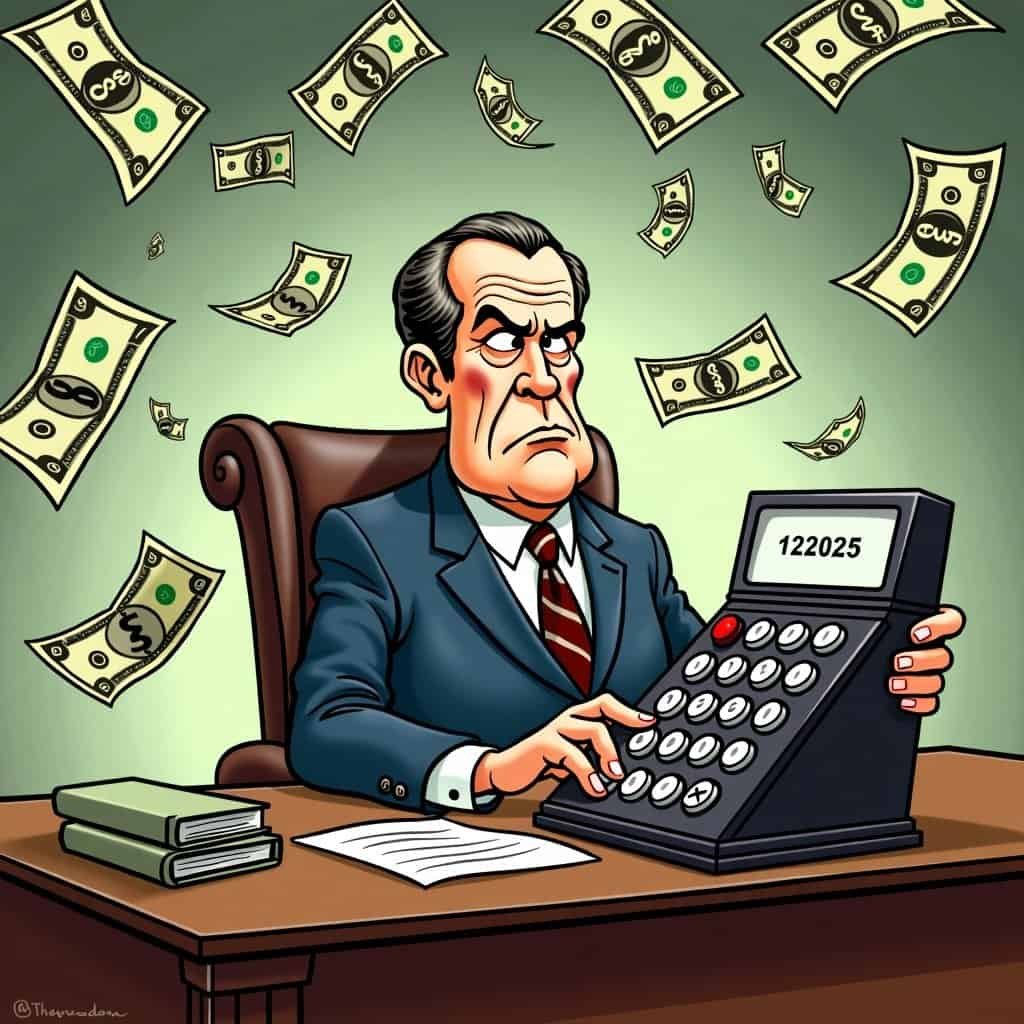Richard Nixon, a president infamous for his shenanigans ranging from economic hijinks to waterless aquatics, had quite the challenge in the ’70s: taming the wild beast of inflation.
Picture this: it’s the early 1970s, and inflation is strutting its stuff like John Travolta in Saturday Night Fever. American wallets were feeling the burn, but never fear! Tricky Dick stepped up to the plate, ready to knock inflation out of the park with his own brand of economic voodoo.
Nixon’s first genius move? He basically yelled “Freeze!” at the economy. He slapped on wage and price controls faster than you can say “I am not a crook.” Sure, it’s like putting a Band-Aid on a broken leg, but hey, it looked good for the cameras. These controls were about as effective as a chocolate teapot in the long run, but they did give everyone a moment to catch their breath in the economic whirlwind.
True to his Republican roots, Nixon decided to play cheerleader for the private sector instead of relying on Uncle Sam’s deep pockets. He went on a tax-cutting spree, rolled out the red carpet for private investors, and told regulations to take a hike. It was like giving the economy a triple espresso and saying, “Go get ’em, tiger!”
Then came the kicker: Nixon declared it was time for some federal belt-tightening. Imagine that! A politician actually suggesting the government should spend less. It’s like a teenager volunteering to do extra chores – shocking, but kind of refreshing. Of course, this led to heated debates hotter than a jalapeno eating contest, but Nixon stood his ground.
But wait, there’s more! Nixon’s pièce de résistance was ditching the gold standard. It was like telling the dollar, “You’re a big boy now, go make your own friends.” This move opened up a whole new world of economic possibilities, for better or worse. It’s as if Nixon looked at the rulebook, said “Nah,” and tossed it out the window.
Now, some might say Nixon’s tactics were as crazy as trying to teach a cat to bark. Critics had a field day, but you’ve got to hand it to the guy – he wasn’t afraid to shake things up. His approach was pure Republican gospel: less government meddling, more private sector muscle, and a dash of “let’s see what happens if we do this.”
Looking back, modern-day conservatives might see Nixon’s anti-inflation crusade as a love letter to free markets. He understood that sometimes you’ve got to let the economy run wild and free, like a herd of caffeinated squirrels. It’s a far cry from the liberal dream of the government playing economic puppet master.
In the end, Nixon’s inflation-fighting antics were like a rollercoaster ride through an economic funhouse. They might not have solved everything, but they sure gave us one heck of a story to tell. And isn’t that what politics is all about?
Nixon’s Inflation-Busting Tactics
| Tactic | Description | Outcome |
|---|---|---|
| Wage and Price Controls | Freezing wages and prices to halt inflation | Short-term relief, long-term distortions |
| Tax Cuts | Reducing taxes to stimulate private investment | Increased economic activity |
| Deregulation | Easing regulatory burdens on businesses | More flexibility for businesses to operate |
| Federal Spending Cuts | Reducing government expenditure | Controversial impact on economic growth |
| Abandoning Gold Standard | Decoupling the dollar from gold | Greater monetary policy flexibility |
The Conservative Approach to Inflation
- Emphasis on private sector solutions
- Reduction of government intervention
- Promotion of free-market principles
- Focus on tax cuts and deregulation
- Skepticism towards centralized economic planning
Economic Impact of Nixon’s Policies
“Nixon’s characteristically Conservative approach – rely less on centralized authority, stimulate the economy through private sector strength, and occasionally throw caution (and gold) to the winds – showcased a bold blend of restraint and daring.”
Table of Contents
- Nixon’s Inflation-Busting Tactics
- The Conservative Approach to Inflation
- Economic Impact of Nixon’s Policies






